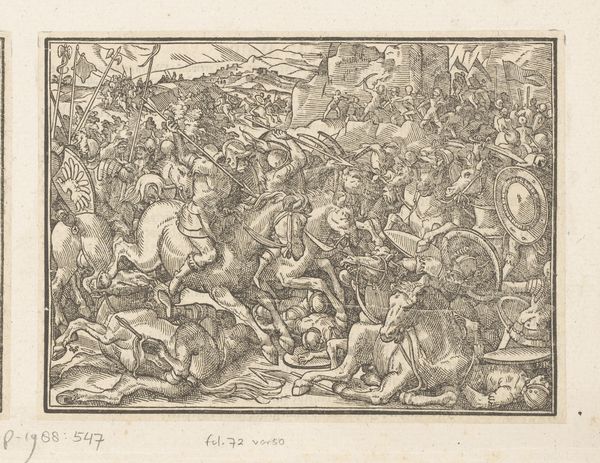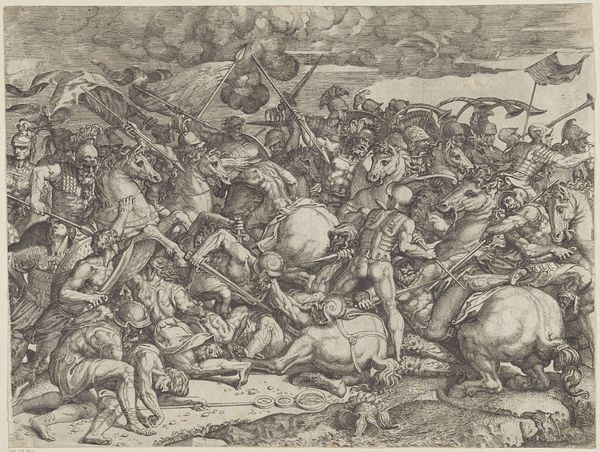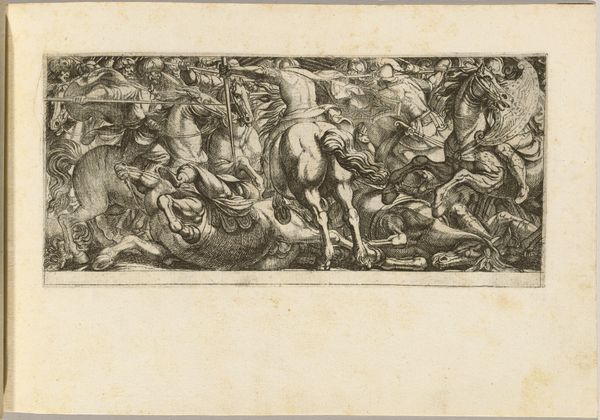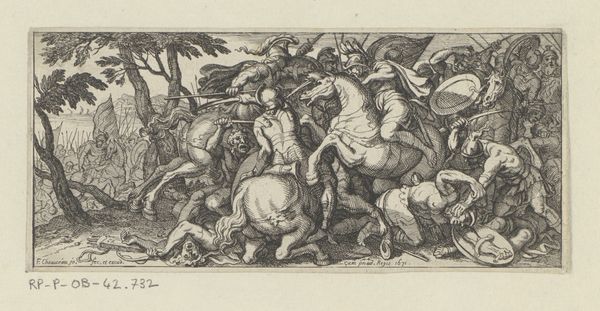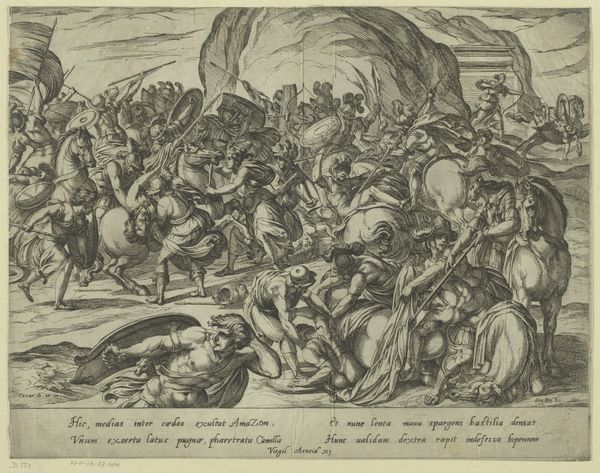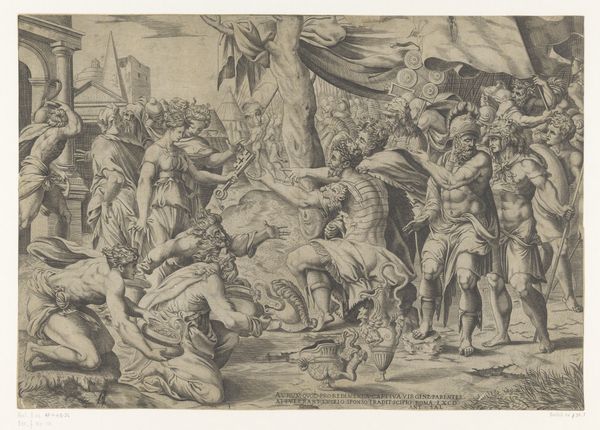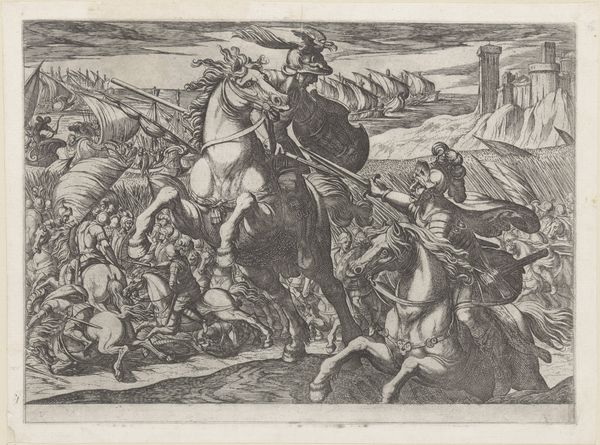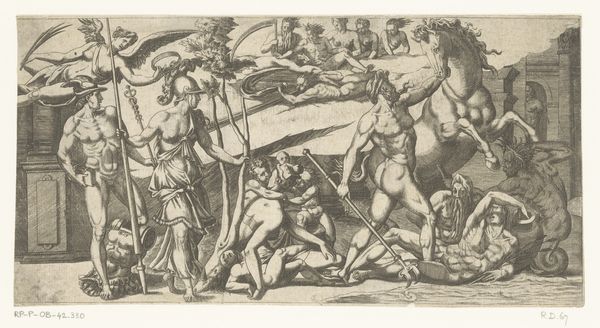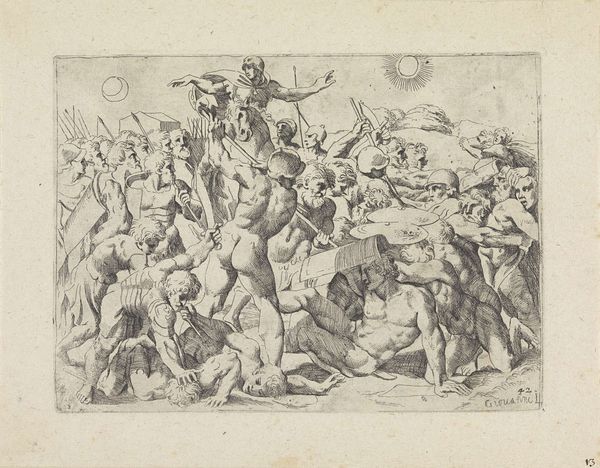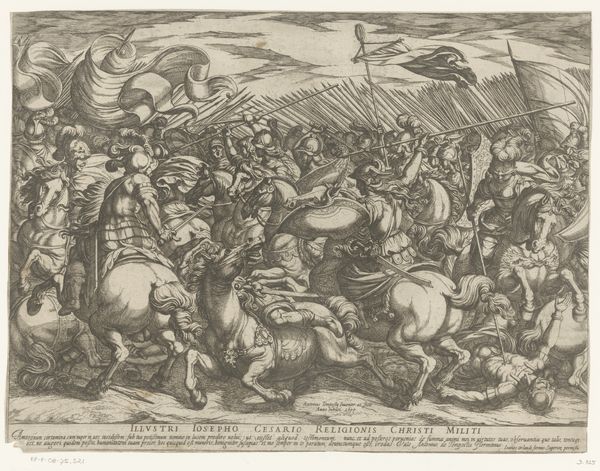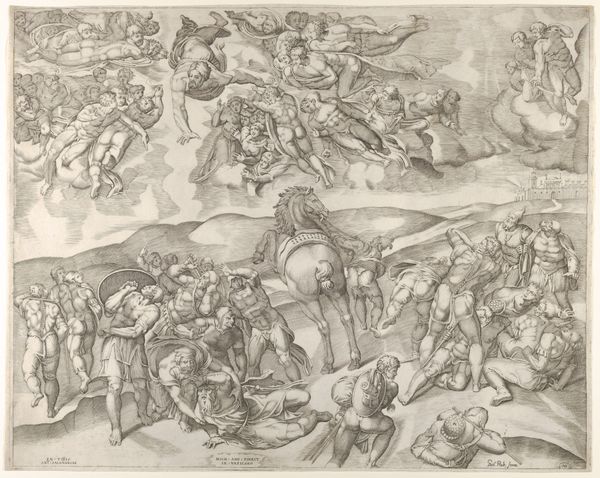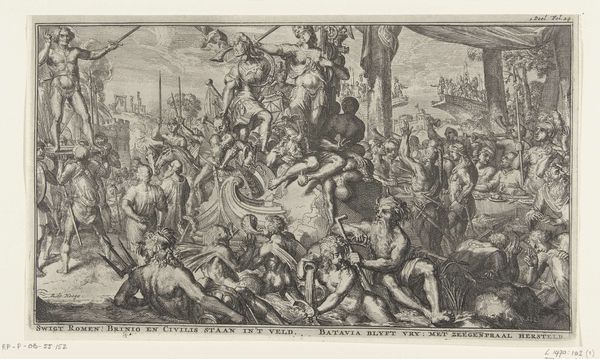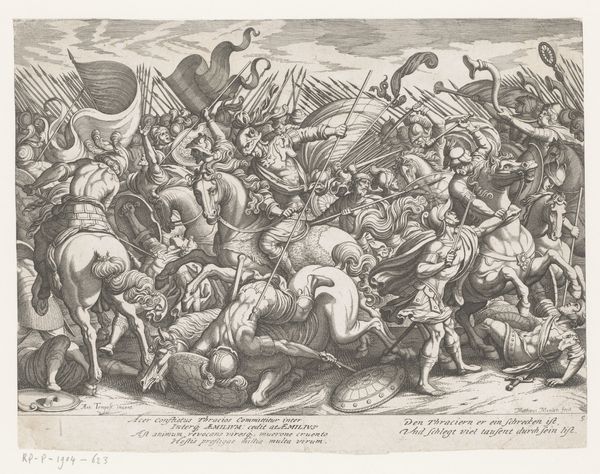
Dimensions: height 409 mm, width 610 mm
Copyright: Rijks Museum: Open Domain
Curator: The image before us is an engraving titled "Slag bij de Milvische brug," or "Battle of the Milvian Bridge," created sometime between 1535 and 1601 by Giovanni Battista Cavalieri. The style certainly speaks to that late Renaissance/early Baroque period. Editor: The overwhelming feeling is… chaos. Bodies and horses intertwined, weapons clashing, it feels quite overwhelming at first glance. The density of the scene is intense. Curator: Precisely. This captures a pivotal historical event, the Battle of the Milvian Bridge in 312 AD, where Constantine defeated Maxentius. Constantine attributed his victory to the Christian God, initiating a significant shift in the Roman Empire's religious landscape. The heavenly host above seems to be bestowing divine favour on the soldiers in the foreground, fighting in Constantine's army. Editor: And look at the level of detail! From the rendering of the armour to the muscles on the horses, you can see how much skill the engraver employed here. It's not just the design but also the labor involved in making the plates that's so impressive. Curator: Absolutely. Cavalieri, working during a period of religious and political upheaval, was not merely documenting history but shaping its visual narrative. Prints like these were often commissioned to spread particular ideological perspectives, particularly concerning religious authority, far and wide. Editor: That’s key to note, isn't it? The purpose was not simply decorative. Consider this engraving's original function. The ease of production here allows dissemination of visual propaganda far further than any fresco. It connects labour and consumption within the sphere of power. Curator: It does raise the question of art as a form of political pronouncement and how printmaking democratizes the production and consumption of visual content, furthering political agendas in doing so. Editor: Yes, that idea that this object that began as, undoubtedly, the domain of the upper classes becomes something that can infiltrate more of society thanks to reproducible methods. Quite clever. I never would have considered that depth, had it not been illuminated so. Thanks for that insight! Curator: And thank you. Examining these historical depictions is such a relevant opportunity to understand just how images and their means of distribution shape public perception and historical understanding, down to our very day.
Comments
No comments
Be the first to comment and join the conversation on the ultimate creative platform.
